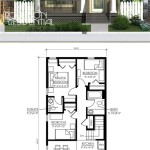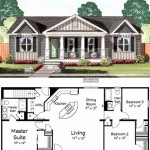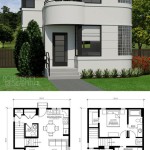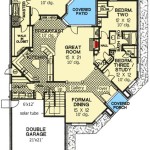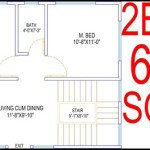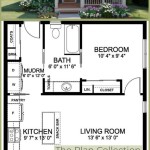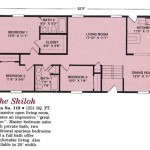Charming Cottage Style House Plans Create Your Dream Homes
Cottage style house plans evoke feelings of warmth, comfort, and unpretentious elegance. These architectural designs, often associated with storybook charm and a sense of rustic beauty, are gaining increasing popularity among homeowners seeking a retreat from the complexities of modern life. Cottage architecture prioritizes functionality and aesthetic appeal, often incorporating elements that blur the boundaries between indoor and outdoor living. Choosing the right cottage style house plan is a crucial step in realizing a dream home. This article will explore the key characteristics, benefits, and considerations associated with cottage style house plans, helping prospective homeowners navigate the process of selecting the perfect design. We will delve into the defining features, common variations, and essential elements that contribute to the unique charm of cottage architecture.
Cottage style homes are more than just aesthetically pleasing structures; they are reflections of a lifestyle. They often represent a move towards simpler living, emphasizing comfort, connection to nature, and a slower pace. The architectural style fosters a sense of community and intimacy, creating spaces that encourage interaction and relaxation. Understanding the underlying philosophy behind cottage architecture is essential for selecting a plan that truly resonates with individual aspirations and lifestyle preferences. Furthermore, the adaptability of cottage designs allows customization for various climates, terrains, and lot sizes, making them a versatile option for a wide range of homeowners.
Defining Features of Cottage Style House Plans
Cottage style house plans are characterized by a variety of distinctive features that contribute to their overall charm and appeal. These elements, often combined in unique ways, create homes that are both visually stunning and highly functional. Understanding these core attributes is essential for identifying and appreciating the nuances of cottage architecture.
One of the most prominent features is the steeply pitched roof, often adorned with gables and dormers. This design element not only enhances the visual appeal of the house but also provides additional space and natural light to the upper levels. The gables and dormers often feature decorative details, such as exposed rafters or window boxes overflowing with flowers, adding to the overall aesthetic.
Another defining characteristic is the use of natural materials. Cottage homes frequently incorporate elements like wood siding, stone accents, and brick pathways. These materials contribute to the rustic and organic feel of the architecture, blending seamlessly with the surrounding landscape. The selection of materials often reflects the local environment, further enhancing the connection between the house and its surroundings.
Windows play a crucial role in cottage design. Multi-paned windows, often with decorative shutters, are a common feature. These windows not only provide ample natural light but also add to the visual interest of the façade. Casement windows, which open outward, are also frequently used, allowing for optimal ventilation and a connection to the outdoors.
Porches are another essential element of cottage style house plans. Whether a small, covered entry porch or a larger wraparound porch, these outdoor spaces provide a welcoming transition between the indoors and the outdoors. Porches offer opportunities for relaxation, socializing, and enjoying the surrounding environment. They often feature comfortable seating, potted plants, and other decorative elements that enhance their appeal.
Finally, asymmetrical designs are common in cottage architecture. Unlike more formal or symmetrical styles, cottage homes often feature irregular rooflines, varied window sizes, and unexpected design elements. This asymmetry contributes to the unique and charming character of each individual cottage.
Variations in Cottage Style Architecture
While the core characteristics of cottage style remain consistent, there are numerous variations that reflect regional influences, personal preferences, and evolving design trends. These variations allow homeowners to tailor the basic cottage design to suit their specific needs and tastes.
English Cottage: This classic style is characterized by its steeply pitched roofs, gabled dormers, and use of natural materials such as stone and brick. English cottages often feature small, cozy interiors with fireplaces as focal points. The landscaping typically includes informal gardens with rambling roses and other flowering plants.
French Country Cottage: This variation blends rustic charm with elegant details. French country cottages often feature stucco exteriors, steeply pitched roofs, and arched doorways. The interiors are typically light and airy, with exposed beams and natural stone accents. Lavender fields and vineyards often inspire the landscaping.
Coastal Cottage: This style is adapted for coastal environments, featuring elements such as shingle siding, light-colored palettes, and large windows that capture ocean views. Coastal cottages often incorporate nautical themes in their décor and landscaping. Durable materials that can withstand the harsh coastal environment are essential.
Modern Cottage: This contemporary interpretation of the cottage style incorporates clean lines, open floor plans, and energy-efficient materials. Modern cottages often feature large windows, minimalist décor, and sustainable landscaping practices. While retaining the core charm of the cottage style, this variation embraces modern design principles.
Craftsman Cottage: This style combines the rustic charm of the cottage with the handcrafted details of the Craftsman movement. Craftsman cottages often feature exposed rafters, wide eaves, and large front porches. The interiors typically include built-in cabinetry, hardwood floors, and detailed woodwork.
Understanding these variations allows homeowners to select a cottage style that best reflects their personal aesthetic and lifestyle preferences. Each variation offers a unique interpretation of the core cottage design principles, providing a wide range of options to choose from.
Essential Elements for Creating a Charming Cottage Home
Beyond the architectural features and variations in style, several essential elements contribute to creating a truly charming cottage home. These elements focus on enhancing the comfort, functionality, and visual appeal of the interior and exterior spaces.
Cozy Interiors: Cottage interiors are designed to be warm, inviting, and comfortable. Soft fabrics, plush furnishings, and warm color palettes contribute to the overall sense of coziness. Fireplaces are often focal points, providing warmth and ambiance. Well-placed lighting, including lamps and candles, creates a soft and inviting atmosphere.
Connection to Nature: Cottage homes prioritize a strong connection to the natural world. Large windows, French doors, and outdoor living spaces blur the boundaries between indoors and outdoors. Gardens, patios, and decks provide opportunities to enjoy the surrounding environment. Natural materials, such as wood and stone, are used extensively to create a sense of harmony with nature.
Functional Spaces: Cottage homes are designed to be highly functional, with efficient layouts and well-organized spaces. Kitchens are often the heart of the home, with ample counter space and storage. Mudrooms provide a practical transition between the indoors and outdoors. Built-in storage solutions, such as shelves and cabinets, maximize space and organization.
Personal Touches: Cottage homes are reflections of the homeowner's personality and style. Personal touches, such as family heirlooms, artwork, and handmade crafts, add character and charm to the space. Unique details, such as vintage furniture, antique textiles, and eclectic accessories, create a one-of-a-kind atmosphere.
Landscaping: Cottage landscaping enhances the overall charm of the home. Informal gardens with rambling flowers, climbing vines, and lush foliage create a romantic and whimsical atmosphere. Stone pathways, picket fences, and garden benches add to the visual appeal. Native plants and sustainable landscaping practices are often used to minimize environmental impact.
Attention to detail in these elements is crucial for creating a cottage home that is not only beautiful but also functional and comfortable. By focusing on creating cozy interiors, connecting to nature, designing functional spaces, adding personal touches, and enhancing the landscaping, homeowners can transform their cottage house plan into a true dream home.

Warm And Welcoming Cottage House Plans Blog Dreamhomesource Com

Warm And Welcoming Cottage House Plans Blog Dreamhomesource Com
:max_bytes(150000):strip_icc()/cloudland_0_0_0-c8f98341bc474c458a8dc3ed2bf01228.jpg?strip=all)
Our 30 Best Cottage House Plans

Cottages Small House Plans With Big Features Blog Homeplans Com

Cottage House Plans Sater Design Collection

Three Popular Cottage House Plans The Designers
:max_bytes(150000):strip_icc()/SL-2069_4CP_Front-main-1fdf3c04af334658a48cbd2af8b742d7.jpg?strip=all)
Our 30 Best Cottage House Plans
:max_bytes(150000):strip_icc()/randolph_1_0_0-cb68d6176e9b4c20b661dba3d7aae29b.jpg?strip=all)
Our 30 Best Cottage House Plans

Beautiful Three Bedroom House Plans Blog Floorplans Com

Bungalow Style House Plans Cottage America S Best Blog
Related Posts


